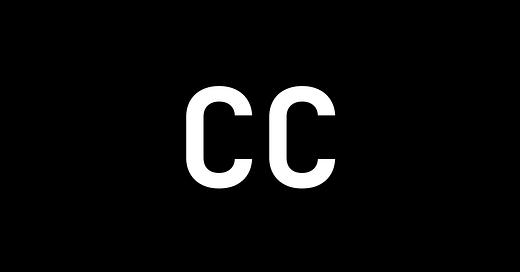How many times have you heard someone say that they find blockchain technology interesting, but they’re not interested in cryptocurrencies? The idea is that distributed ledgers are the primary worthwhile initiative, while a cryptocurrency token is just a speculative tool.
I think that this is totally, completely wrong. Not only is the token useful, but tokens are the thing that make blockchain systems so special.
Blockchain systems are valuable primarily because of their tokens, not in spite of them.
First, blockchains on their own are great. Blockchains enable global trade without borders, create open and transparent systems, and improve trust in existing processes. Blockchains can make what we already do more efficient and equitable. Great!
However, these improvements, while meaningful, only optimize what exists today. They don’t fundamentally chart new territory. The true innovation lies in cryptocurrencies themselves, which enable blockchains to create entirely new markets and reimagine how value is distributed. The cryptocurrency asset itself is how blockchains transition from being an infrastructure technology to engines of economic innovation.
History shows us that a large part of economic growth through technology comes from creating markets where none existed before. Trade routes opened wealth by connecting distant regions. The Industrial Revolution unlocked human productivity with machines. The internet monetized information and attention.
Tokens are the next step in this story by creating thousands of new markets for new types of assets and digital commodities.
Blockspace itself, each block in a blockchain, is an example of new type of digital commodity. New markets have emerged around blockspace - hardware and electricity on the Bitcoin side, bandwidth and MEV for Ethereum and Solana - not to mention the markets for simply getting a transaction included in a block.
With tokens, blockchains create markets that were previously inaccessible. DeFi markets allow anyone with internet access to lend assets, borrow, or earn interest permissionlessly. If you have ETH, you can borrow against it in a lending market instantly, no need to go to a bank and apply for a loan.
These markets are building entirely new systems of trustless coordination and generate wealth by mobilizing idle capital and making money more productive.
A key point to understand here is that wealth creation is not a zero-sum game. Wealth can be created. And the creation of new markets drives wealth creation. And value that has always existed, but never captured, can now be accessed (see Pudgy Penguins and Web3 IP).
Wealth is created when new systems mobilize resources that were previously idle, inaccessible, or underutilized. The Industrial Revolution created wealth by harnessing steam power. The internet created wealth by organizing information. Crypto creates wealth by organizing trust and global coordination through math and code.
Applications like Uniswap or Aave have their own tokens, UNI and AAVE, which allow users to participate in governance, earn rewards, and shape the future of the protocols. These tokens incentivize the creation and growth of decentralized markets, where users can lend, borrow, or trade assets without intermediaries. By distributing ownership and decision-making power, these tokens help build ecosystems that mobilize capital, scale trustless coordination, and generate economic value.
Helium (HNT) incentivizes individuals to operate physical infrastructure, such as wireless hotspots, creating a decentralized 5G network. Bittensor (TAO) incentivizes you to develop open source AI to plug into its network to earn token emissions.
These tokens actively align participants around shared goals, whether improving platform efficiency, securing decentralized networks, or enabling community-driven governance. The tokens are what make these systems work by incentivizing certain behaviors and building new markets on top of those behaviors. They also allow applications, services, and innovations to emerge on top of the systems they power. You or I can build a business on top of Aave.
This positive-sum dynamic and incentive alignment allows for new ways for how value is created and distributed. Instead of there just being a buyer and seller, like in most markets, tokens allow for value to flow in programmable ways that reward network participants for contributions such as security, liquidity, or governance, effectively transforming them from passive consumers into active stakeholders in a shared digital ecosystem.
Without tokens, valuable blockchain applications can still exist. A supply chain management system could use blockchain to improve transparency and traceability without needing a native token. But these systems are limited to optimizing existing processes. They don’t unlock entirely new economic possibilities or enable markets where none existed before.
Really, the biggest issue with non-token blockchain systems is the lack of incentive. Tokens are incentive mechanisms to get a user to engage in a certain kind of behavior, or to use a system/application in the first place.
If you don’t have a token, you have to convince participants to adopt and secure the network through external or intangible motivations, which generally pales in comparison to the direct, built-in incentives that native tokens provide.
In a competitive, open-source environment, the project that integrates a token to galvanize user engagement and secure the network will almost always outpace a tokenless alternative. Study the incentives.
Tokens make it possible to build markets that fundamentally reimagine value creation and distribution. Cryptocurrencies are what happens when financial assets meet programmability and global access. This is the unlock that will drive the growth of the crypto economy. And it will raise standards of living globally by providing every person with an internet connection with access to the same financial markets and tools.
New markets, new value. Positive sum.
Crypto, not blockchain.




"I love train tracks, but I hate the thought of traveling on a train", is basically the equivalent of that one :-D